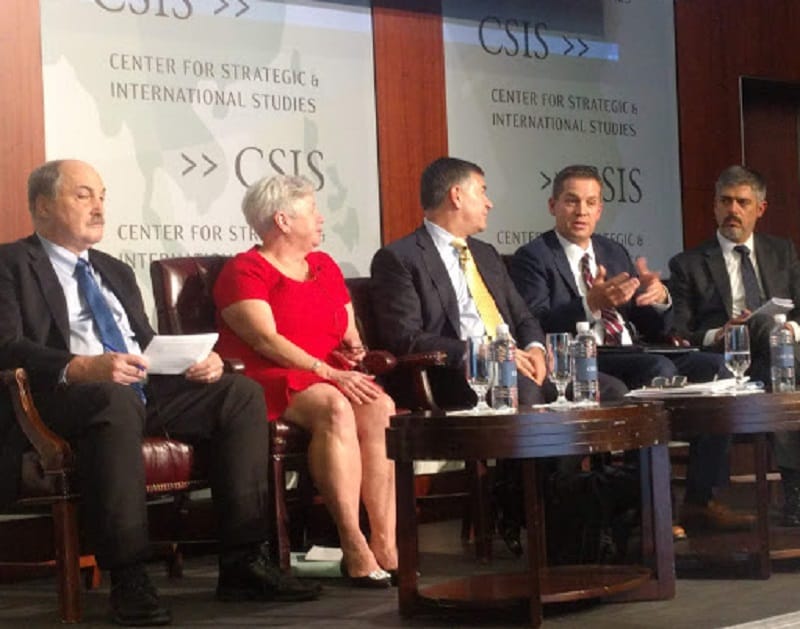China’s Technology, Economy and Military Are All Advancing at an Alarming Rate, Say CSIS Panelists
WASHINGTON, October 29, 2019 – With China’s technological advancement proceeding at a concerning rate for America, a panel at the Center for Strategic and International Studies Tuesday discussed the ways in which the U.S. can improve its technology transfer policies. David Hanke, partner at Arent Fo

WASHINGTON, October 29, 2019 – With China’s technological advancement proceeding at a concerning rate for America, a panel at the Center for Strategic and International Studies Tuesday discussed the ways in which the U.S. can improve its technology transfer policies.
David Hanke, partner at Arent Fox LLP, called China the foremost important national security challenge of this generation. Both the public and private sectors, he said, should be alarmed by a world where China is dominant militarily, economically, and technologically.
The U.S. can provide a more offensive front, Hanke said, by publicly naming and imposing sanctions on bad actors involved in intellectual property theft. This would help address the weaponization of investment as well as export controls.
America has lost $600 billion annually to intellectual property theft by Chinese actors, said Michael Brown, director of the Defense Innovation Unit at the U.S. Department of Defense. If China causes American companies to lose market share over time to global competitors, that will significantly impact GDP as well as compromise national security.
Brown introduced some of the basic principles of the Defense Innovation Unit’s Technology Transfer Policy Toolkit, which combines both defensive and proactive policies.
The defensive policies, he said, would modernize export controls and strengthen the processes enforced by the Committee on Foreign Investment in the United States. On the other hand, proactive policies would help the U.S. maintain global preeminence in science and technology, by increasing federal investment and implementing incentives for long-term research and development in the tech sector.
If the federal government knows the end use of new technology, Brown said, it can make sure that the technology rests in good hands, by cooperating with global allies and applying continuous review of the product.
A multi-faceted approach is required to respond to tech transfer challenges, said Thomas Feddo, assistant secretary for investment security at the U.S. Department of Treasury. Not all foreign investment is benign, he said, however the U.S. needs to maintain an open-investment environment to provide as much clarity as possible to the public about any risks.
Improvements are already being made on the federal level to address these risks, Feddo said. The Department of Treasury, for instance, is developing an office dedicated to the enforcement of mitigation agreements between domestic and foreign investors. Additionally, CFIUS is working to foster company compliance with the government, using multilateral engagement to share best practices with allied countries.
The Export Control Reform Act of 2018 helped mitigate tech transfer risk in several ways, said Eileen Albanese, director of the Office of National Security and Technology Transfer Controls at the U.S. Department of Commerce. The most important part of the bill, she said, required the president to establish a formal and continuous processes for identifying emerging technologies.
With the formalization of this process, Albanese continued, federal agencies must consider multilateral agreements and the impact export controls may have to American innovation.
Specificity on compliance is key, she said. Not only would the clarity help facilitate best practices for innovation, but it would also identify the emerging technologies that are essential to U.S. national security.










Member discussion